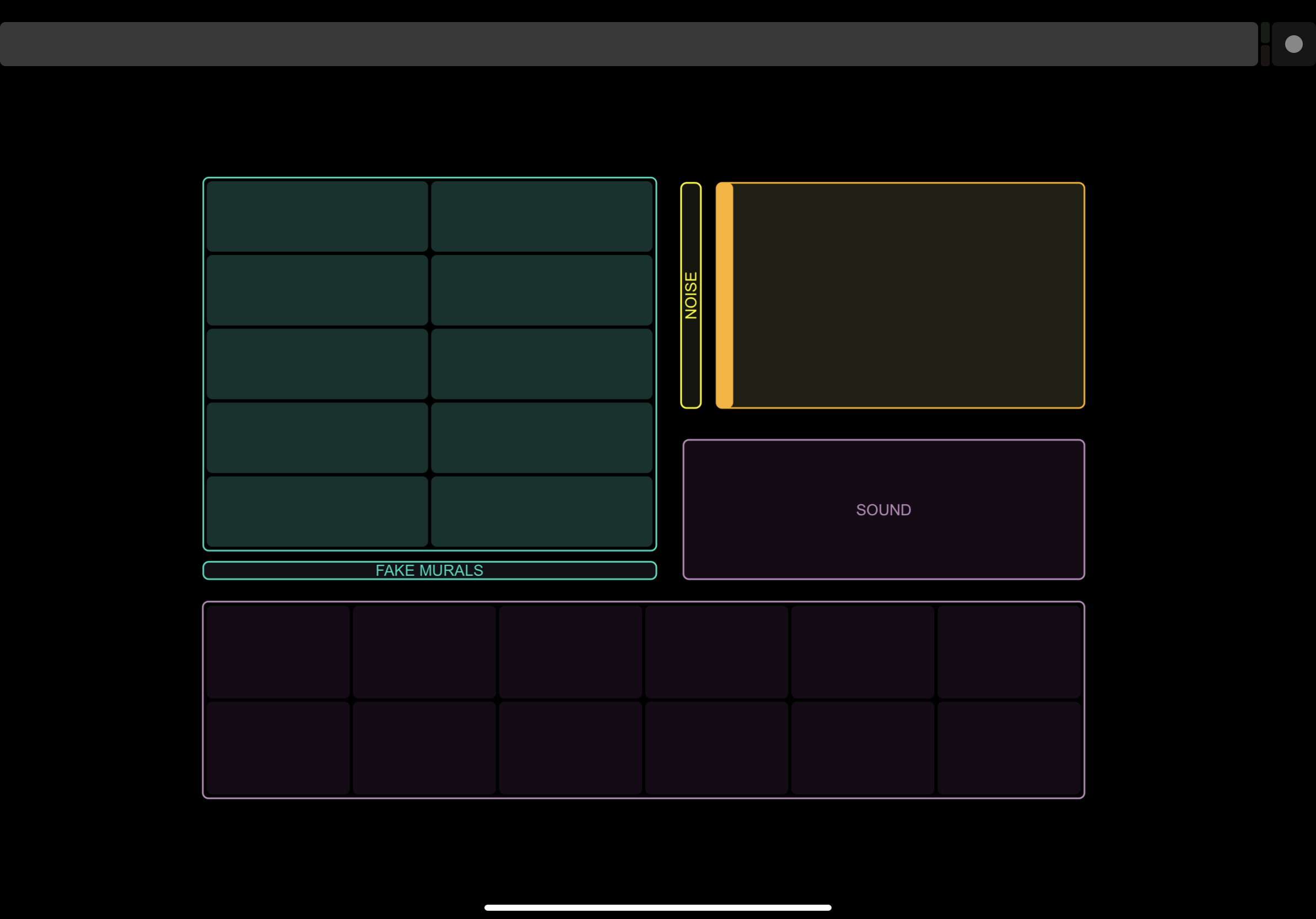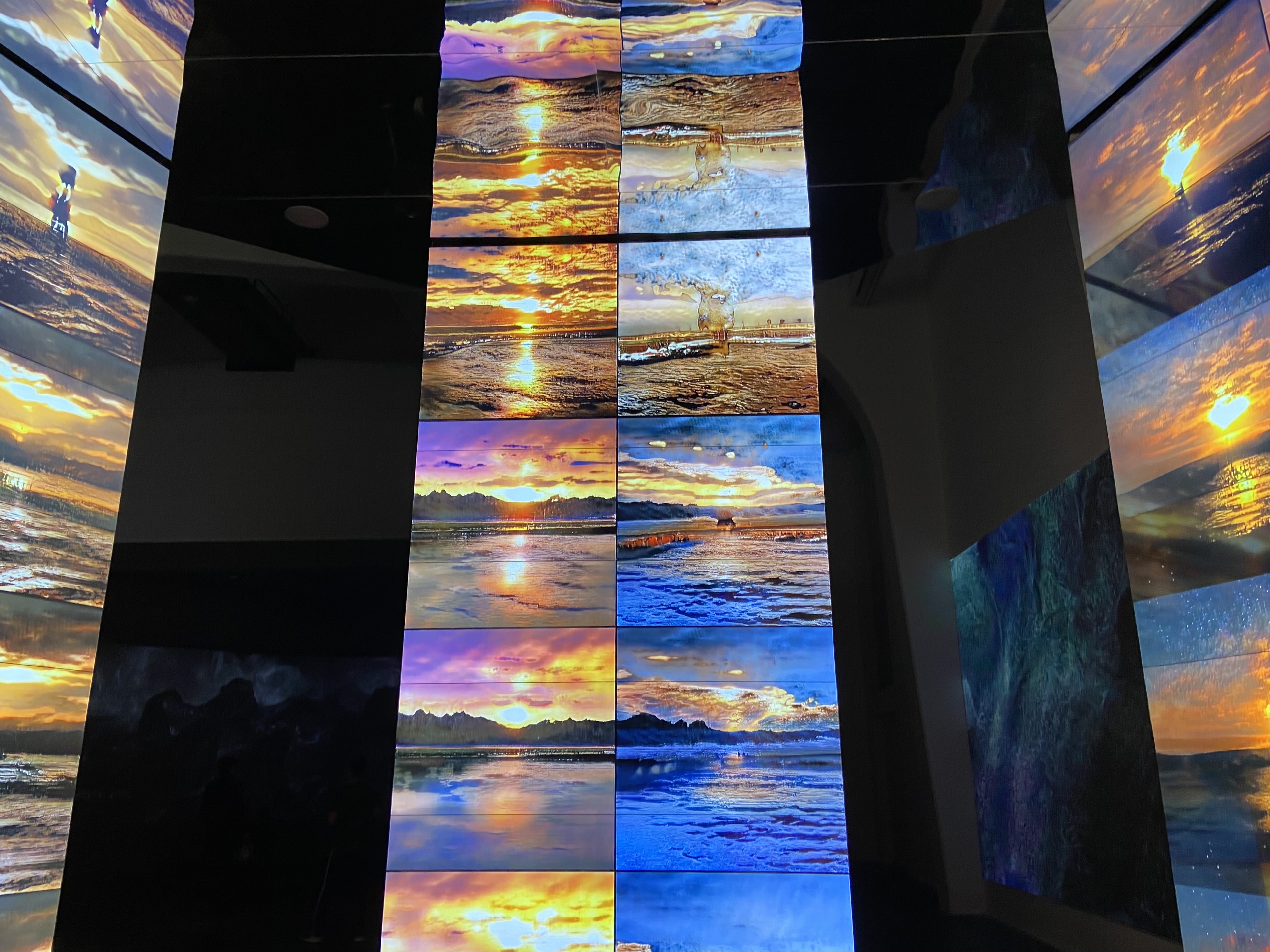Lost Thearchy
This is an interactive installation for audience to create their own experience from it. The pictures were trained and generated from thousands of Dunhuang murals. And the interactive part is made by Processing, the touch panel on the iPad has 23 buttons to control the pictures and sounds.
produced by: Jingyi Chen
Concept
Though training, AI erased the specific characteristics of the Buddhism deities, only extracted colors and boundaries, making them like vague pictures of people and stripped off the sacred filter created by believers because of their prejudice. The gods of the old age have died, does AI replace them? Or anything else? What has become the new god in this era to support people's spirits and lead their lives? I was thinking of it. By the interactive way, the non-linear narrative is presented and created by the audience. The work also refers to montage, machine factory, feminism, human history. I hope it can inspire the audience’s reflection and imagination through the process.
Background
Dunhuang Murals, also known as Mogao Caves, are in northwest China, they contain some of the finest examples of Buddhist art spanning a period of 1,000 years, from the 5th to the 14th century. I went there a few years ago and known some history about how local people donated their property and pinned their lives on Buddhism. I want machine learning could help us to find something new from ancient cultural heritage and develop the unique beauty of Asian art.
dataset
Interaction
The ipad is set on a pedestal and the screen is cast by a projector on a black wall. The control panel has 23 buttons altogether, of which ten control the pictures, twelve control the sounds, and the slider controls noise/glitch. They can be triggered by the audience by random so that they will have completely different experiences.
Interface
Process
Firstly I collected thousands of pictures of old murals and other ancient ornaments in different ways and accorded to the characteristics of GANs which dataset is most suitable for training and which GAN shall I use. After trimming and resetting the size of pictures and knowing StyleGAN2 is what I want to use, I tried different platforms for data training like Google Colab and Paperspace but they are easy to disconnect in China during the training process. Finally, I chose RunwayML to train the dataset but it is far more expensive (5 cents/min) than Colab or Paperspace but it is easy to use and does not need a 1:1 (the height equal to the width) dataset. The parameter in it should be taken notice of is truncation, the lower it is, the higher the realism. Besides the training steps normally between 5000 to 10000 steps and a higher FID score will produce stranger images. After some hours the .pkl model was trained by the remote server and then I could use it to generate numerous pictures and latent space walk videos right away or share with other people. I produced thousands of pictures and got inspiration from them. The vague and strange figures triggered my reflection and imagination about human history. I believe that machine learning can help artists to get new ideas more efficiently and it observes and analyses this world in a distinct way. I hope the audience can feel the magic of GAN so inspected and picked up pictures from them directly and combined with my association to collect and deal with tracks. Also, I am exploring the way how to organize GAN as part of an artwork. In some artworks, the outputs created by GAN are put in their original environment, or inspired choreographists and designers in motions and colors. In Memo Akten's Deep Meditations: A brief history of almost everything in 60 minutes, he displayed generative audios and generative videos of artificial nature on gigantic screens.
In order to organize these resources, I used Processing to write the program and TouchOSC to make interaction. The interface of it can be edited in OSC editor. Due to the limitation at this moment, I chose to render a virtual exhibition environment in Cinema 4D.
Output
design the interface
Memo Akten's Deep Meditations: A brief history of almost everything in 60 minutes
Design and development
The reason for me to choose the circular shape is to simulate the design of the cells in the ancient caves. It reminds me of the sunshine cast from the outside and illuminated the murals and statues of the Buddhas and Bodhisattvas, making them look spectacular and sacred. In all continents, the ancient architects tried their best to design the course of sunshine. For such a reason cast it in a gloom room, the audience will focus their attention on the work. Meanwhile, it has some feelings of estranged. The figures of deities are in fact the figures of the mass, people can't imagine things beyond their knowledge, therefore, how similar the fate and stories of gods and human beings! In the process of studying machine learning make me have an idea that the ancient patterns are the simulacra of the real world, what produced by AI are the simulacra of these artifacts. It is a symbol from natural world to computational/artificial world. According to Baudrillard, it presented the 1st and 4th phase of the simulacrum, from the reflection of reality to no more connection to reality. And in the comparison of fiction novels and myths, as well as inspired by Donna Haraway, I found there are the following correspondences: Afterlife-atoms/quantified, deities/ghosts - robots/aliens, heaven/hell-other dimensions...
Furthermore, I think there are some more problems that should be explored after the finish of the work: Are traditions and cultures alienated or used by control today? How much the audience perceive the interactive installation is made of machine learning and what are their emotions? For most people, they can't understand the technology (as I saw in an exhibition) or they don't care that completely. How important and how to illustrate it in the work? I
Source code:
https://github.com/jingychen/Lost-Thearchy
References:
Glitch Cam by Iea.https://www.openprocessing.org/sketch/917162
StyleGAN2. https://github.com/NVlabs/stylegan2
StyleGAN2 for Google Colab.https://colab.research.google.com/github/dvschultz/ai/blob/master/StyleGAN2.ipynb#scrollTo=yQ7U1ftuj_Dc
Tutorials about machine learning. https://www.youtube.com/channel/UCaZuPdmZ380SFUMKHVsv_AA
Donna Haraway (1987) A manifesto for Cyborgs: Science, technology, and socialist feminism in the 1980s, Australian Feminist Studies, 2:4, 1-42, DOI: 10.1080/08164649.1987.9961538




































































